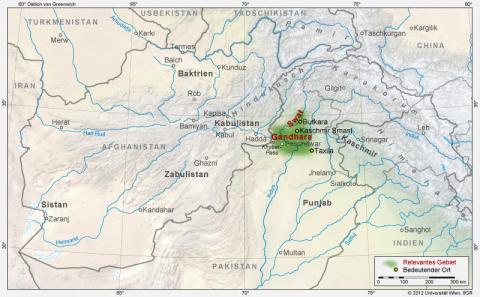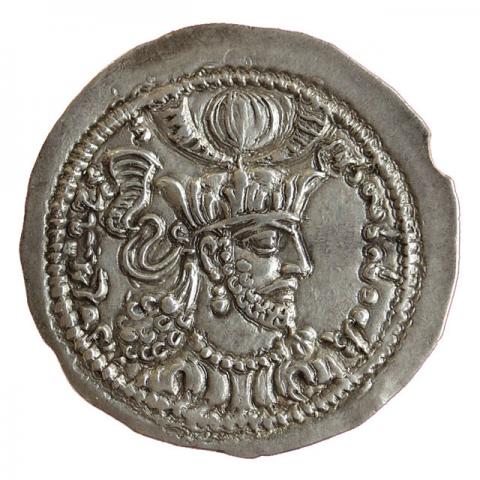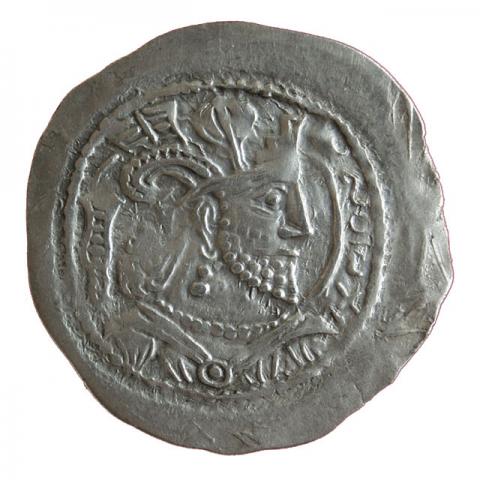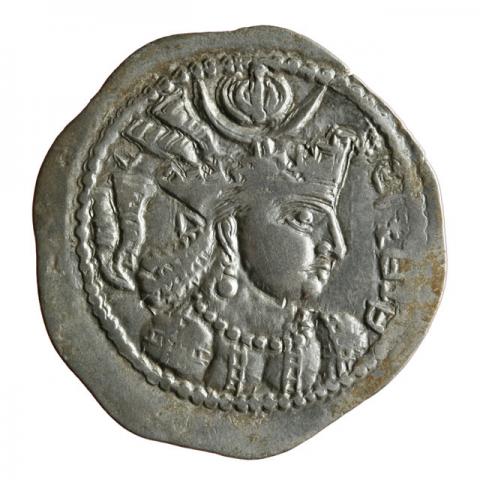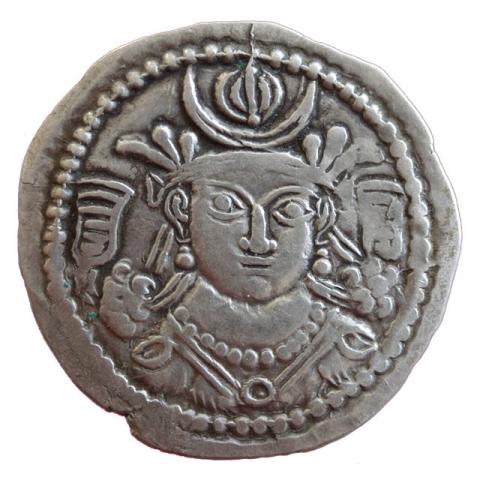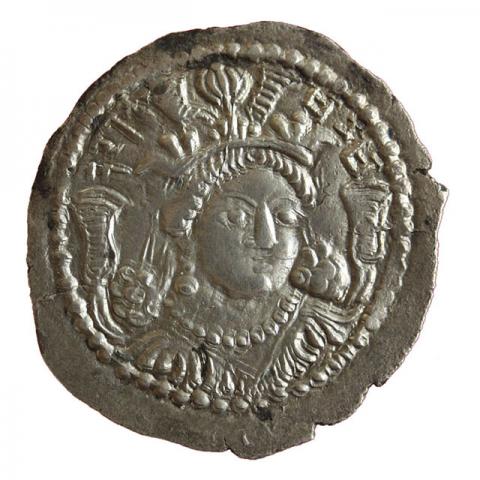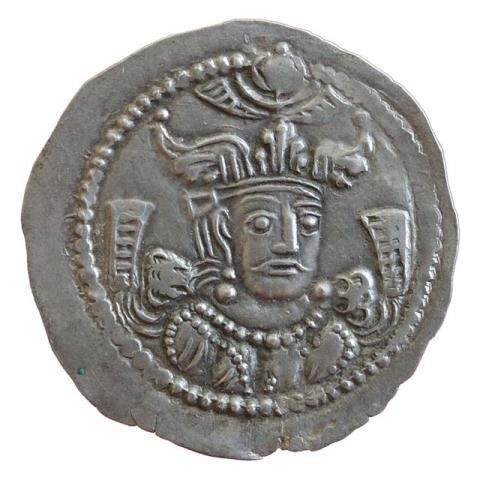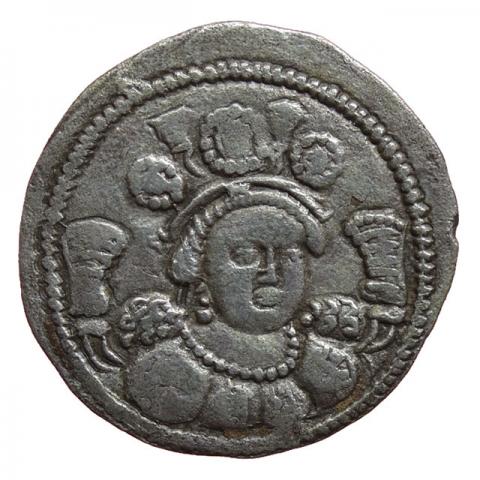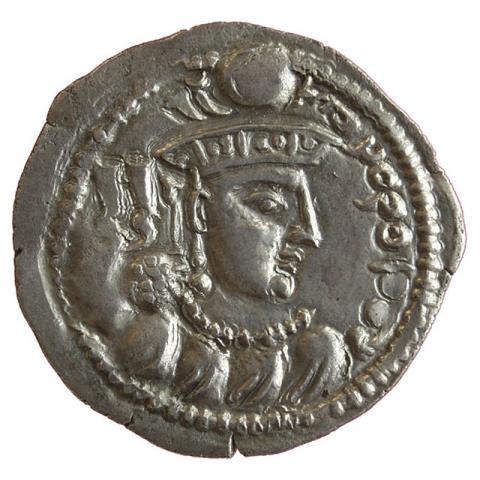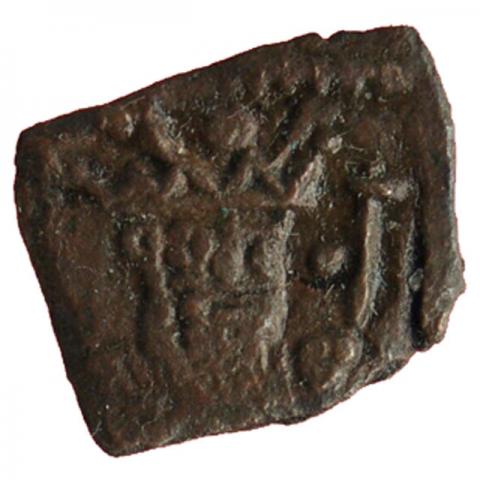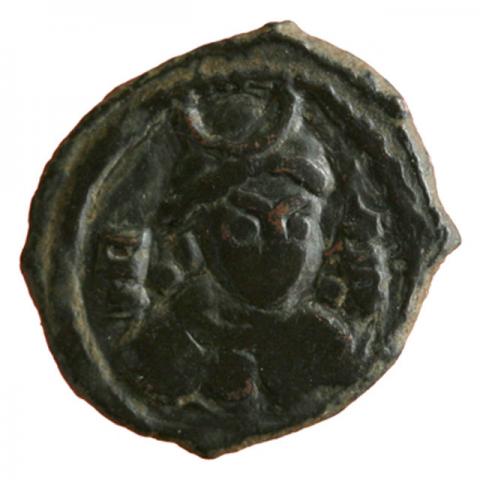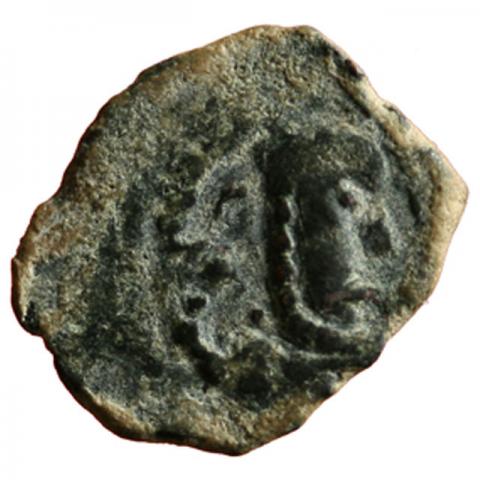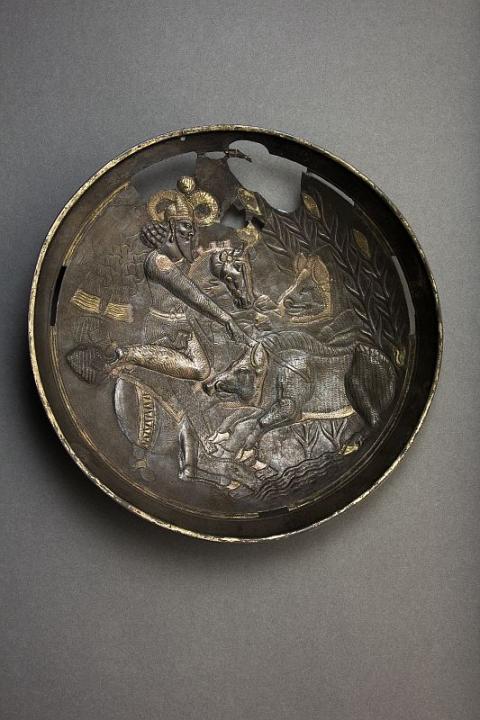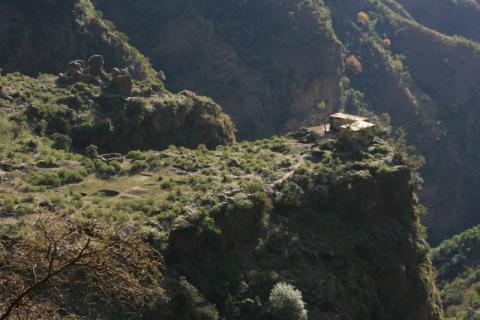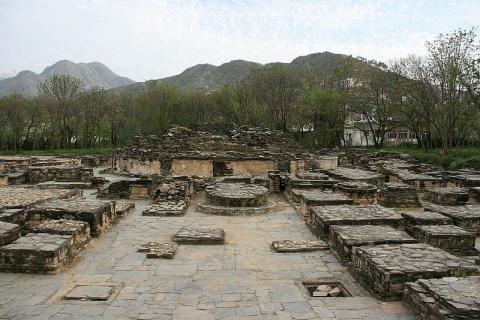
In Gandhara and Uddiyana (Swat Valley, Pakistan) the Kidarites struck coins only in silver and copper based on the Sasanian drachm, which had been introduced to this region by Shapur II (309–379 CE). On the obverse the bust of the king is always shown, and on the reverse a Sasanian fire altar flanked by two attendants. The artistic quality of the king's likeness is extraordinary, and some even outshine their contemporary Sasanian models. The outstanding three-quarter portraits show the kings largely clean shaven. Also the crowns, composed of ram's horns, wings, palmettes, rosettes and crescent moons, reveal innovative tendencies. The inscriptions are composed in Middle Persian and Brahmi and less frequently in Bactrian. The king's names include Wahram, Peroz and Kidara, and the new additions Buddhamitra and Srivarma; as with the Bactrian issues (showcase 3) the title "King of Kushan" is usual.
The center of Kidarite silver coin production lay in Gandhara and Uddiyana, where four to five mints of unknown specific location were at work (A–E). The area of circulation stretched at least from Kabulistan to Taxila. At the Buddhist monument Butkara stupa (Swat) six Kidarite drachms were uncovered which may well be interpreted as products of a mint there (Fig 4/C).
Beside the silver drachms, copper coins were used for smaller transactions at local markets. One of the most important find locations is the Hindu cave complex of Kashmir Smast in North Gandhara (Fig. 4/B), where numerous Kidarite copper coins have been found.
Even before the middle of the 5th century CE the dominion of the Kidarites was gradually taken over by another Hunnic group, the Alkhan, who had settled in Kabulistan toward the end of the 4th century CE and expanded their sphere of control eastward over the Khyber Pass and to Gandhara and Taxila (showcase 6 and 7).
A. Silver plate (partially gilded) with the Sasanian king hunting wild boar. 4th century CE. Found in 1893 in Kercheva (Ural foothills, Perm’ region). (© St. Petersburg, State Hermitage Museum, Inv.-Nr. S-24)
The king wears a ram's horn crown like the one prominently displayed on Kidarite coinage. The plate was produced in a local workshop in the east of the Sasanian empire and was in possession of a Sogdian trader.
B. The Hindu religious complex of Kashmir Smast (Devadharma Nagara) in Gandhara.
The religious shrine lies in the Sakara Mountains at 1135 m altitude and is composed of several cultic spaces and monasteries as well as a cultic cave. Founded in the 2nd/3rd century CE at the time of the great Kushan dynasty, the religious complex was still fully active in the 620s when the Chinese monk Xuanzang traveled through Gandhara. In recent years numerous coins have been found in and around Kashmir Smast, the majority of which belong to the Kidarites (Nos. 10-12).
C. Butkara I in Uddiyana (Swat Valley), Buddhist monastic complex with the Great Stupa and smaller cultic buildings. (© Rome, IsIAO)
The Italian excavations have revealed five principal construction phases spanning from the 3rd century BCE into the 10th/11th century CE. Phase 4 (marked on the plan in red) lasted from the 4th to 7th century CE and marked the artistically richest and most active period in the history of the building complex. Excavations have uncovered six Kidarite silver drachms, which according to their style and manufacture all come from one mint, probably located in Uddiyana (compare Nos. 6, 7).

